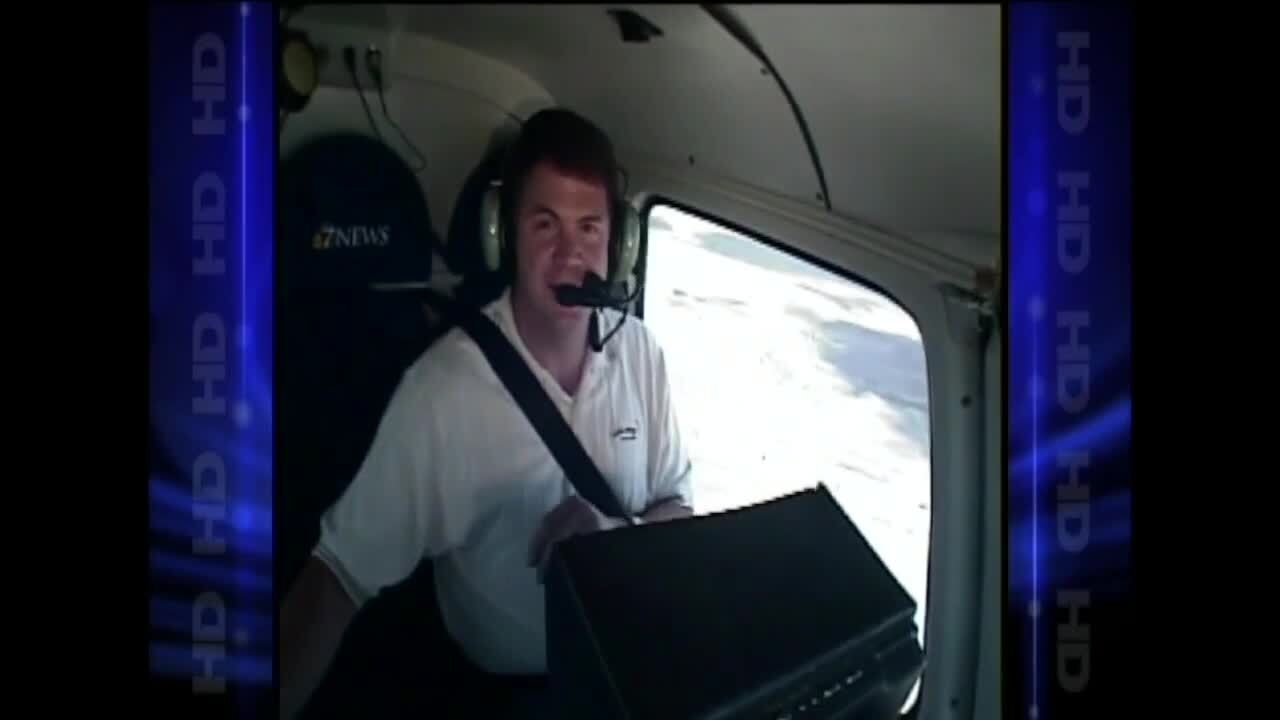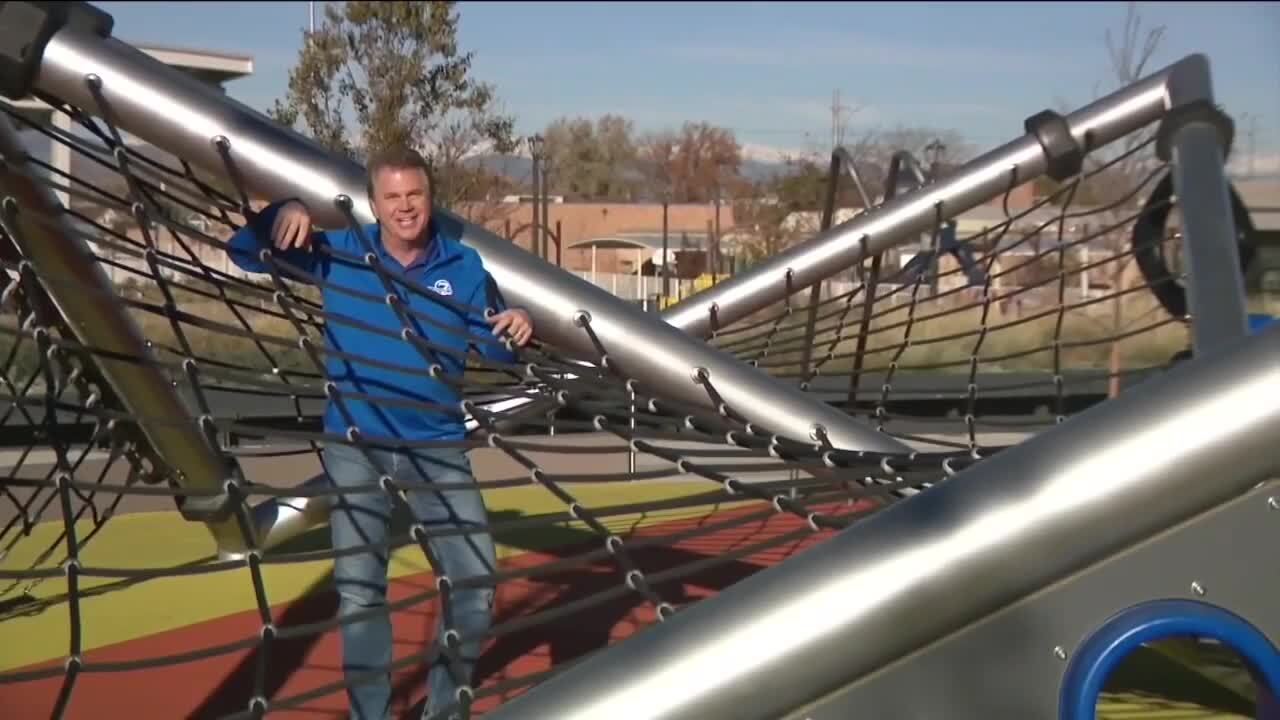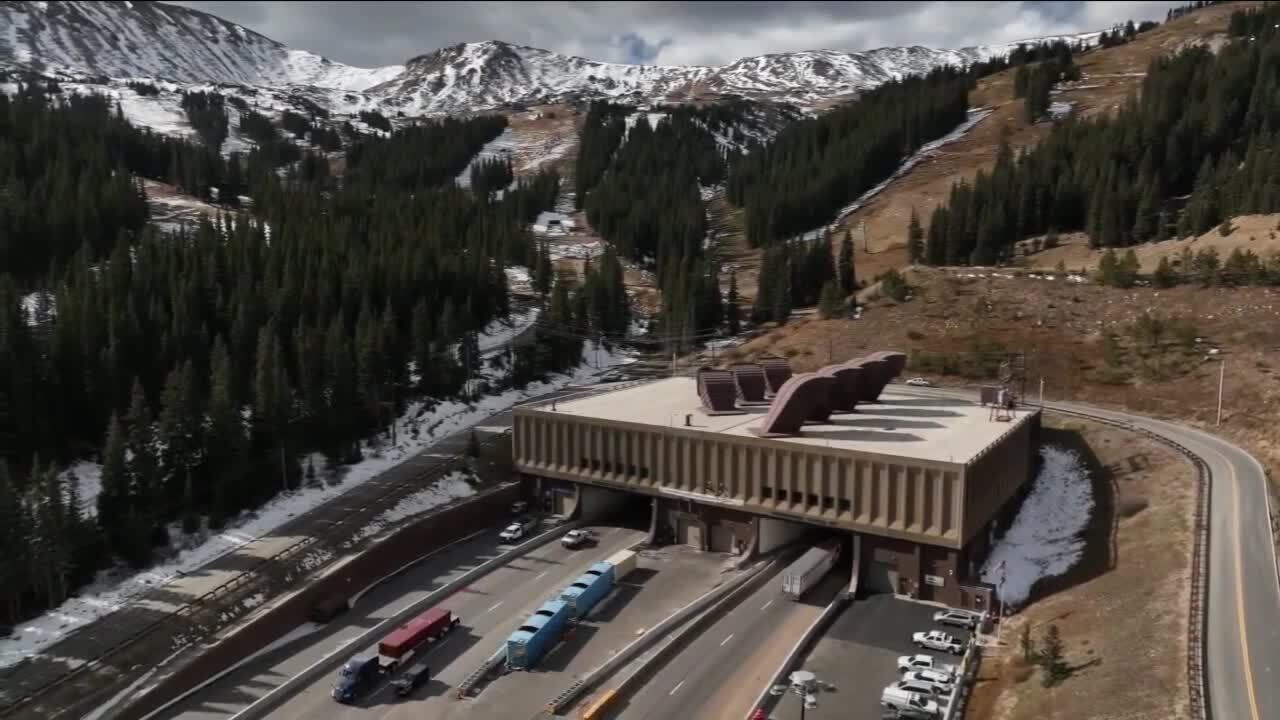It's been 70 years since Denver7 first hit the airways. All month long, we're showing you the changes to our station and our state. As Colorado grew, so did our highways. Denver7 Traffic Expert Jayson Luber takes us on a road trip— from the Mouse Trap to Floyd Hill.
The Mouse Trap
The intersection of Denver’s two major interstates: Interstate 25 and Interstate 70 is known to most long-time Coloradans "the mouse trap."
There is still a debate about who came up with the name, whether it was Denver’s first airborne traffic reporter, the late Don Martin who said the intertwining ramps could trap a mouse, or former Denver7 Consumer and Entertainment reporter Bill Clarke.

Either way, the connection and two interstates are vital to not just the City of Denver, but also to all of Colorado. Nearly half a million vehicles drive through the mouse trap every day. That is just shy of how many people live in Wyoming.
This interchange went through its last major reconfiguration during the 1990s. In 1984, a US Navy truck hauling six torpedoes overturned causing panic and gridlocked traffic for the day, prompting the new design.
The final bridge was dedicated in 2003 in the middle of one of the largest and most expensive public works projects in Colorado history— "TREX."
TREX
The Union Avenue bridge over I-25 on the north side of the Denver Tech Center was one of the most important and dramatic changes to I-25. This is one of 18 bridges that were either replaced or rehabilitated as part of the TREX project.
TREX was the nickname for the transportation expansion project. TREX wasn’t just about widening and modernizing I-25 and the section of I-225 up to Parker Road, it was also about expanding the light rail system between downtown Denver and the Denver Tech Center— the southern business hub of metro Denver.

I covered TREX from the traffic helicopter. It was my first long term, major transportation story.
The volume of traffic here was predicted to exceed its maximum capacity of 180,000 vehicles per day, and it was feared the freeway would be near gridlock most of the day.
But one of my strongest memories were the times I-25 would flood under Logan Street. It used to happen so much we use to call it "Lake Logan." One particularly bad flood happened right during construction, trapping drivers who had to be rescued from their cars. Thanks to improved drainage and a large retention area, flooding doesn’t really happen there anymore.
TREX took five years to complete. It was finally finished back in 2006, and 17 years later, I-25 at Belleview now carries about 280,000 each and every day. It's still slow going each and every afternoon, but it's better than it was heading south on I-25 into Douglas County to another major change of I-25.

We are now driving south of Castle Rock in an area nicknamed "the gap." It got the moniker because until last year, it was still just two lanes between here and Monument. It remained relatively unchanged since it was originally built about the same time that Denver7 signed on the air in the 1950s.
One of the unique parts of this project is one of several tunnels built under I-25. You won’t see any cars or bikes or people walking through there. The tunnel is exclusively for the wildlife that lives and migrates through this area. This tunnel is helping to eliminate the numerous collisions that were all too common here between vehicles and elk, deer and even bears.
However with wider, more comfortable lanes, drivers have felt more aggressive, going faster than ever with speeds now averaging well over 80 mph.

Central 70 project
On the north side of downtown Denver, a park now tops I-70— a 1,000 foot long tunnel that allows traffic to flow underneath all the kids who play there every day.
The more than $1 billion Central 70 project was finished just last year. It's a great example of how highways can be transformed from splitting a neighborhood to bringing the community back together again.
The original design was an elevated bridge type highway that cut right through the neighborhoods. It wasn’t until the bridge was in such disrepair with concrete falling off and rebar showing, that instead of replacing it, the idea was to lower the interstate and connect the roads at ground level to allow the community to come together again.

This is not the only tunnel on I-70. There is a much longer one about 60 miles away at an elevation of 11,000 feet.
Eisenhower Johnson Memorial Tunnels
West of Denver is one of the two major accomplishments of I-70 in the Colorado mountains. We call them the EJMT— the Eisenhower Johnson Memorial Tunnels. The Eisenhower bore carries traffic west. The Johnson bore lets traffic flow back to the Front Range.
It is not an understatement to say that these tunnels cut under the Continental Divide are the primary link to the east and west sides of Colorado.
Sure, you could roll over 12,000 foot Loveland Pass as the hazardous material trucks still do. But the tunnels allow nearly 40,000 vehicles, including thousand and thousands of other semi trucks, to easily roll though every day— something Loveland pass could never handle.

The last time I was there was to celebrate the 50th birthday of the Eisenhower bore. Get this— since these tunnels have been opened, there have been more than 435 million vehicles that have used these tunnels.
Glenwood Canyon
The other I-70 mountain engineering marvel is west of here through Glenwood Canyon. It is not hyperbole to say that project during the 1980s was a marvel because of the way the interstate is stacked, double decker style in places. And the project team took care to incorporate the interstate into the fragile canyon environment.
The canyon has seen it’s fair share of issues with recent flooding and severe mud slides that closed the interstate for a couple weeks back in the summer of 2021. CDOT conducted extensive work over the last couple of years to prevent future rockfall and debris flow.
Just down the hill from there is a place where traffic doesn’t flow well at all, and it is the place for one of CDOT next big improvements.
Floyd Hill
Floyd Hill is just east of Idaho Springs and just west of Evergreen. This place was named for Merril Floyd who had a ranch up here and who also owned the Clear Creek Wagon Road Company, which built the original road in this area.
Anyone who has tried to go skiing in the winter knows this hill all too well, sitting in traffic for what feels like hours.
This current $700 million project will reshape the look of this major corridor that connects the mountains to metro Denver. The project encompasses an 8 mile section of I-70 that is in desperate need of a upgrade. Not to mention, the hill on the south side of I-70 was slowly sliding down.
The additional lane here will be a tolled express lane like the ones we’ve seen constructed on most metro area highways. One of the most interesting parts of the changes here will be an elevated highway deck similar to I-70 in Glenwood Canyon.
CDOT says this rebuild will take about 5 years. When it's done, it should immediately help alleviate the seemingly endless stopped traffic that gathers here every weekend.
Another busy area is in the northern Front Range where the growth is exploding.
I-25 north through Longmont, Berthoud, Loveland and Fort Collins is just a very small section of one of the other major and seemingly never ending northern Front Range projects.
This project has been massive, constructed in several phases that started 5 years ago.
Originally, construction was set to wrap up last year, but more and more parts were added as funding became available. That allowed CDOT to not only rebuild the roadway but they also replaced bridges with entirely new structures and installed new designs like the diverging diamond outside Berthoud where you drive on the left, not the right for a time.
Also new to Colorado are mobility hubs that allow for commuter buses to stop in the middle of the interstate where passengers get on and off allowing for quicker trips between northern Colorado communities and Denver.

The future of travel here will be CDOT’s Bustang commuter bus service that will stop at transit hubs in the center part of the interstate allowing for faster service to and from Denver.
While there is an end to this project scheduled for now sometime in 2024, another major project that has been needed for years is still on the horizon.
As we look to the future of metro area improvements we need not look farther than Interstate 270- a short segment of interstate that connects our two major roadways I-70 and I-25 though Commerce City. It's always busy. Even during the pandemic, this was the first segment of roadway to get back to nearly normal levels of traffic.
CDOT is looking to the future of 270 by adding and express lane, replacing nearly a dozen bridges and reworking the main interchange at Vasquez.
People ask me all the time, "What is the future of transportation in the next 25 or 50 years? Self driving cars? Flying cars?" (The way people drive now I’m not sure I want to fly next to them.) I’m sure there will be more urban bike lanes and an emphasis on alternative transit but really, only time will tell.
But what I do know is that we here at Denver7 will be here to cover all of it for you.




